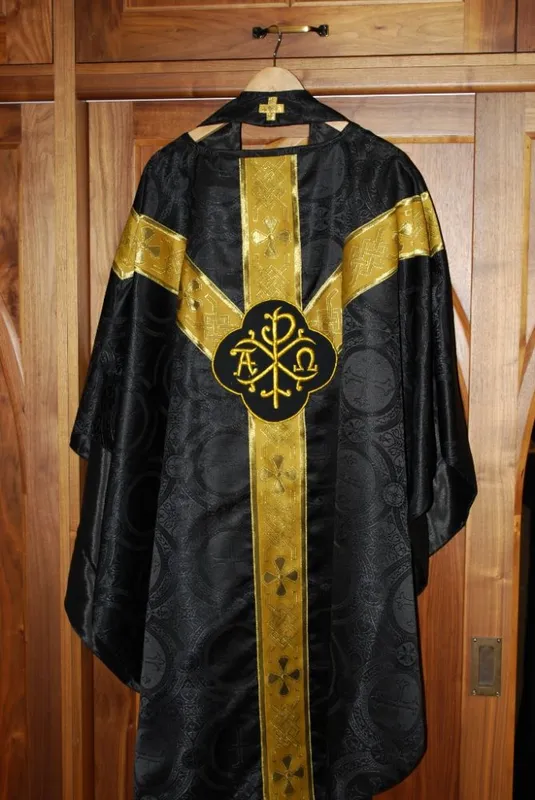Vestments








A priest wears special clothes every day of life and also during Mass. The black clothes symbolise poverty and the white collar stands for obedience.
-
A priest may wear a special robe called a 'Cassock' or 'Soutane'; a priest's is always black but the Pope's is always white!
- The first vestment Fr. Martin puts on is called the 'Amice'. It comes from the Latin word for 'helmet' and it stands for protection.
-
Next Fr. Martin puts on the 'Alb'. This comes from the Latin word for 'white' because this vestment is always white. It stands for purity.
-
Fr. Martin then ties the 'Cincture' around his waist. It is the symbol of chastity.
-
Next Fr. Martin drapes the 'Stole' around his neck. Its colour changes depending on the Mass to be said that day. It is a symbol of a priests authority to celebrate the Sacraments and so is worn for every Sacrament.
- Lastly, Fr. Martin puts on a vestment called the 'Chasuble' which comes from the Latin word for tent or little house. It is only worn at Mass and like the Stole its colur changes depending on the Mass. It stands for charity.




The first long cloak seen here is called a 'Cope' and was originally a raincoat! It is used for special celebrations called 'Benediction' which means 'blessing'.
The second Cope belongs to our Church and as you can see it has a very delicate sewn image of Saint Malachy on the back.
Vestment Colours
There are a number of colours used for the vestments and which colour is used depends on whether it is a special celebration or an ordinary day.

The Church's year begins on the 1st Sunday of Advent and the colour for Advent is purple. Advent is a penitential time when we prepare to celebrate the great joy of Christmas.

Christmas is a special time as we celebrate the birth of Jesus in Bethlehem. It is a joyful time and so the colour of the vestments is white.

When there is no special time (like Advent, Christmas, Lent or Easter) then the priest will wear green vestments which remind us of creation and nature.

Lent begins on Ash Wednesday and is a time when many people do something (give up sweets, say extra prayers, give money to charity) to prepare to celebrate Easter. The vestments at this time are purple.

The most important feast of the year is Easter as it is during this feast we celebrate the Resurrection of Jesus from the dead and so the priest wears white vestments.

Red vestments are worn to celebrate the Feast of Pentecost, it reminds us of the fire of the Holy Spirit.
Red is also worn on the feastdays of the Apostles and Martyrs who died for the Christian faith.

Gold vestments can be worn for very special feastdays instead of white, such as at Christmas or Easter.

Black vestments can be worn at funerals and on All Souls' Day.


White vestments with a blue design are worn for feasts of Our Lady such as the Immaculate Conception and the Assumption. Sometimes cloth of sliver (here with a dark blue design) will be worn.







